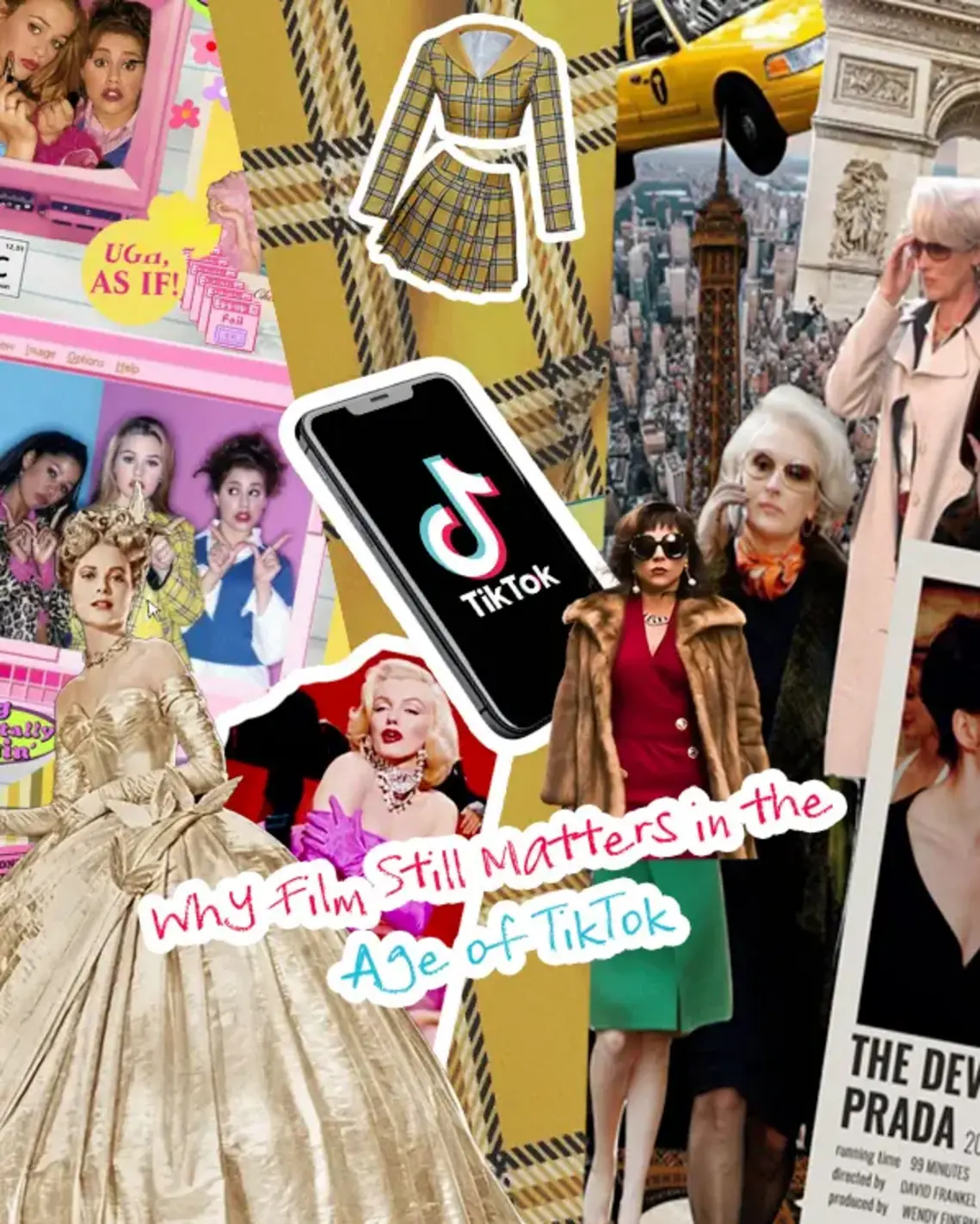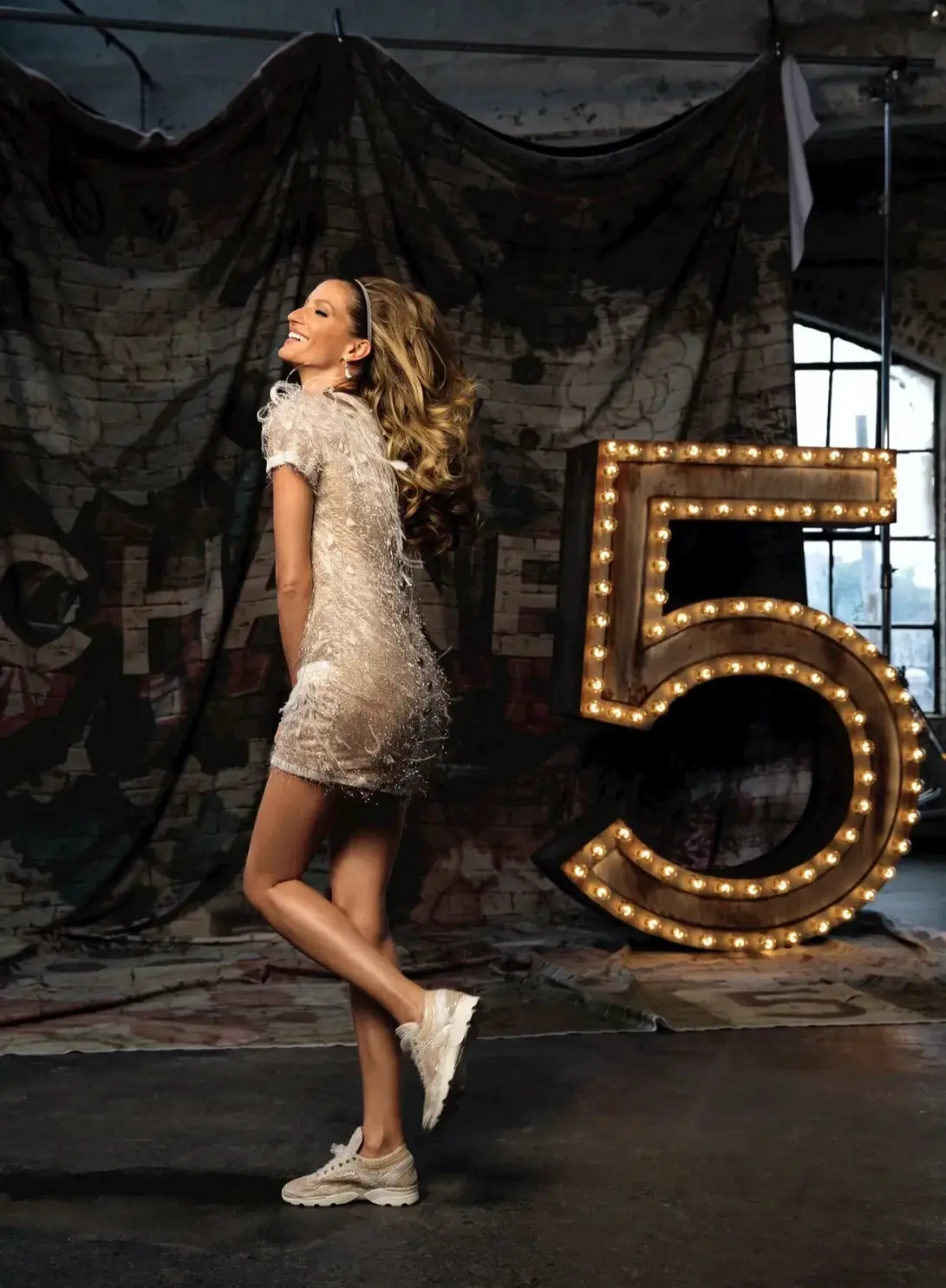If TikTok is fashion’s speed date, film is the long, smoldering love affair. One gives trends by Tuesday, the other gives Audrey Hepburn forever!

If TikTok is fashion’s speed date, film is the long, smoldering love affair. One gives trends by Tuesday, the other gives Audrey Hepburn forever!
September 30, 2025
Film has long given fashion its mythic resonance, from Audrey Hepburn’s Givenchy gowns to the kaleidoscopic fantasies of Baz Luhrmann. Yet today, with TikTok condensing trends into 15-second cycles, one question emerges: does fashion still need cinema? The answer, as history and industry remind us, is a resounding yes. Fashion without film risks losing not just its glamour, but its memory.
Fashion has always been about more than clothes. It is a system of symbols, of aspiration and allure. But those symbols need a medium strong enough to endure, to seep into cultural memory. That medium, for over a century, has been film.
When Marilyn Monroe sang “Diamonds Are a Girl’s Best Friend” in Gentlemen Prefer Blondes (1953), clad in William Travilla’s shocking pink satin gown, she created more than a costume moment - she carved an archetype of glamour. When Audrey Hepburn appeared outside Tiffany’s in Givenchy’s little black dress in 1961, she elevated a simple garment into an eternal emblem of sophistication. Fashion magazines, however powerful, could not offer that kind of permanence. A magazine cover fades by month’s end; a movie lives on in endless screenings, remakes, and homages.
TikTok, by contrast, devours novelty. A micro-trend might light up the algorithm for a week - the “Tomato Girl Summer” aesthetic, or “Coastal Grandmother Chic” - only to be discarded with the next swipe. What film offers is not just trend, but myth: images powerful enough to transcend time.
Fashion’s relationship with cinema has always been symbiotic. Hollywood gave Parisian couture its global stage; couture gave Hollywood stars their immortal silhouettes. Consider Edith Head, who dressed everyone from Grace Kelly to Elizabeth Taylor, her Oscar-winning designs influencing department store racks as much as runway collections.
Designers have long recognized cinema’s cultural capital. Yves Saint Laurent’s partnership with Catherine Deneuve in Belle de Jour (1967) not only dressed the actress but cemented Saint Laurent’s modernist vision of Parisian chic. Decades later, Baz Luhrmann’s short films for Chanel No. 5 starring Nicole Kidman or Gisele Bündchen reimagined perfume advertising as cinematic event.

Fashion houses continue to invest in the language of cinema precisely because it creates mythology. Gucci’s collaboration with Ridley Scott on House of Gucci turned corporate family intrigue into pop spectacle. Prada regularly partners with auteurs like Wes Anderson, Roman Polanski, and Ridley Scott to craft campaigns that feel like short films, not mere commercials. These are not frivolous indulgences; they are calculated efforts to secure a place in the cultural imagination.
But today’s landscape is different. TikTok is not cinema - it is anti-cinema. Its essence is speed, compression, and disposability. In 20 seconds, a creator can anoint ballet flats as the “it” shoe, only for loafers to reclaim the crown two weeks later. The platform has democratized influence, but at a cost: fashion is caught in a perpetual loop of novelty without narrative.
This acceleration has real economic and cultural consequences. Designers must produce faster. Brands feel compelled to chase micro-trends, diluting their DNA. Consumers, overwhelmed by constant churn, experience “aesthetic fatigue.” Film, by contrast, offers the antidote: a slower rhythm, a visual language built for resonance rather than virality.
Fashion films - whether feature-length dramas like The Devil Wears Prada or documentaries like The September Issue - serve as archives of style. They not only showcase garments but contextualize them within human stories: ambition, desire, rebellion, transformation.
Think of Clueless (1995), with its yellow plaid suit and digital wardrobe interface - both a satire and prophecy of consumerist fashion culture. Or Phantom Thread (2017), which meticulously dramatized couture’s obsessive rituals. These films are not disposable “content”. They are cultural texts, ensuring that the labor, artistry, and social meanings of clothing are not lost in the scroll.
TikTok can replicate the surface - the plaid, the silhouette, but it cannot tell the deeper story of class, aspiration, or identity embedded in clothes. Without film, fashion risks losing its archive of meaning.
The fashion industry itself stands at a crossroads. On the one hand, it benefits enormously from TikTok. Viral trends drive sales, especially among Gen Z consumers who discover brands through “GRWM” videos and micro-aesthetics. On the other hand, the industry knows that long-term cultural capital requires more than virality.
This is why, even in 2025, houses like Dior, Gucci, and Chanel continue to stage fashion films or fund cinematic collaborations. Maria Grazia Chiuri’s Dior shorts, directed by feminist filmmakers, reinterpret couture as narrative; Alessandro Michele’s surreal Gucci “Ouverture” series transformed the fashion show into episodic cinema. These projects may not go viral like a TikTok challenge, but they embed brands into cultural consciousness with far more longevity.
Film allows fashion to breathe, to unfold, to be remembered. It offers depth in an era of surfaces, permanence in a world of flux. It creates a space where clothing is not just consumed but contemplated.
Audrey Hepburn’s black dress at Tiffany’s still influences designers six decades later—not because it was trendy in 1961, but because it was immortalized through story. Compare that to last summer’s TikTok “Barbiecore”- a bubblegum-pink aesthetic that flared brightly and then fizzled by autumn. One lives on in cultural mythology; the other disappears into algorithmic ether.
Fashion without film risks becoming fashion without memory. And memory is what transforms garments into icons.
Does this mean TikTok has no place in fashion? Of course not. Social media expands reach, democratizes voices, and keeps the industry responsive. But it cannot replace the cinematic register. The challenge - and opportunity - for brands is to balance both.
Imagine this future: TikTok generates the spark, the instant buzz. Film provides the lasting flame, embedding those sparks into cultural memory. Together, they create a layered ecosystem where immediacy coexists with legacy.
Fashion needs TikTok for virality. But it needs film for immortality.
Cinema has always been fashion’s great mirror and magnifier. It translates fabric into fantasy, style into story, clothing into cultural artifacts. In an age where algorithms demand endless novelty, film insists on depth, permanence, and poetry.
If fashion abandons cinema in favor of TikTok alone, it risks becoming ephemeral - no different than a fleeting filter or meme. But if it sustains its cinematic soul, fashion remains what it has always aspired to be: not just garments on a body, but stories stitched into culture, myths woven into memory.
And that is why, even under the glare of TikTok’s hyper-speed spotlight, fashion still needs film.